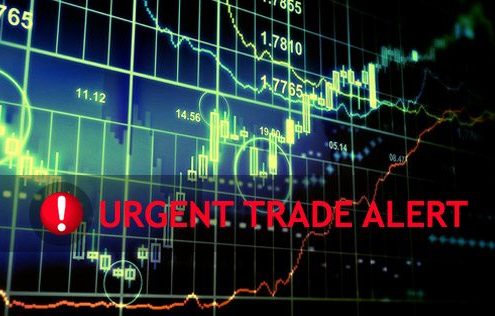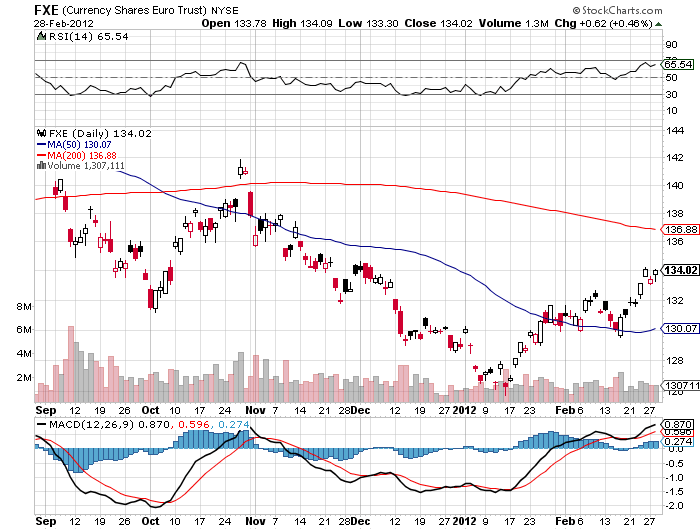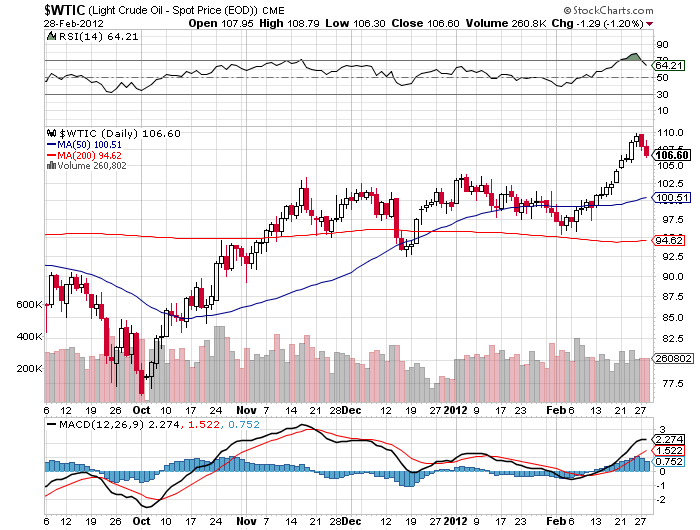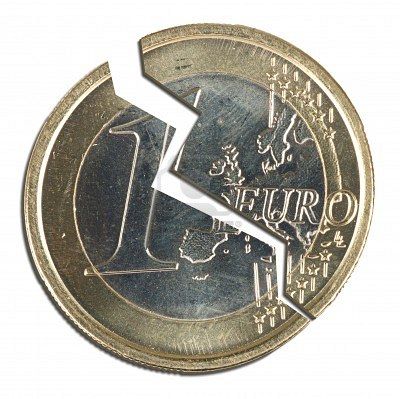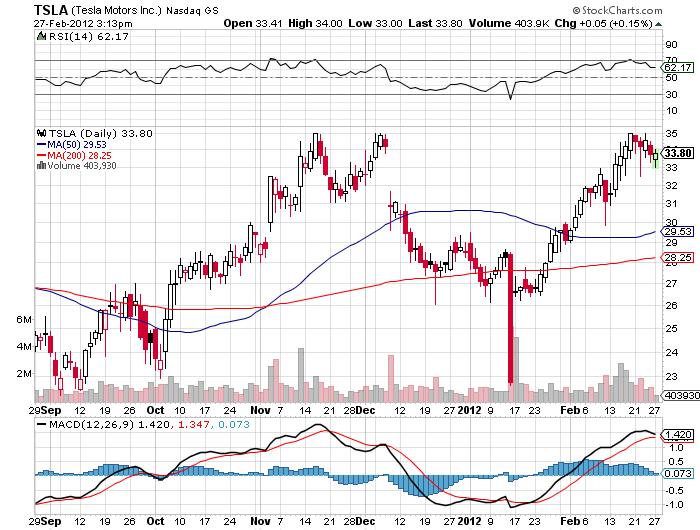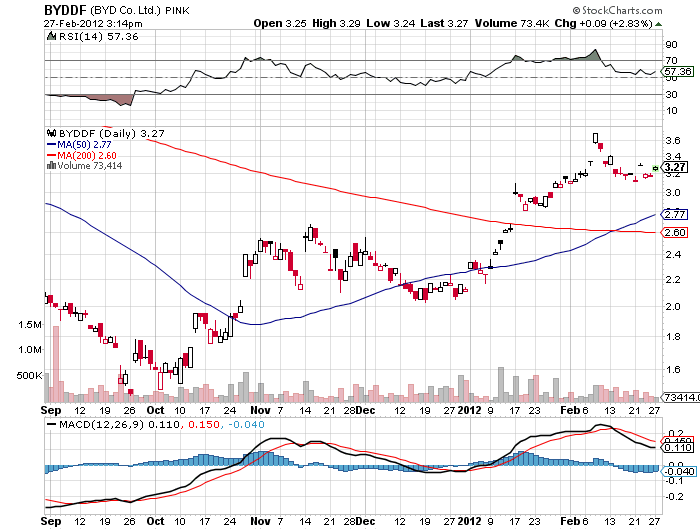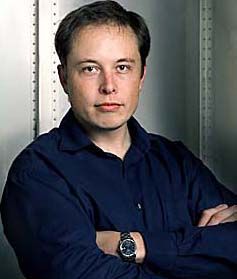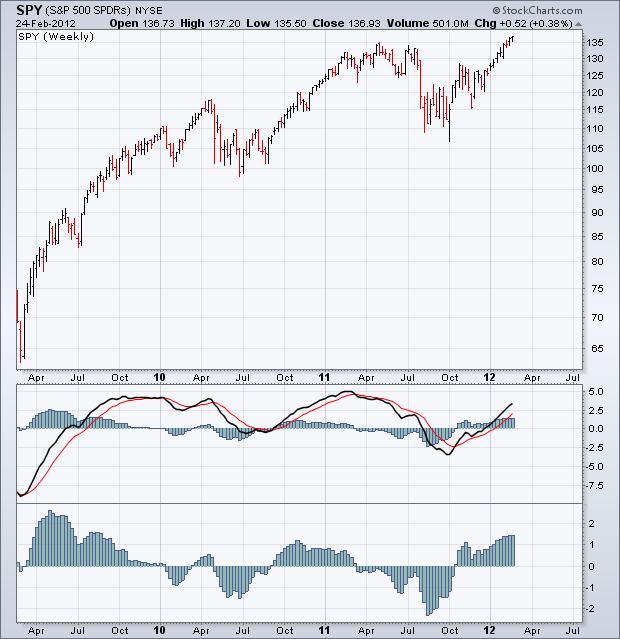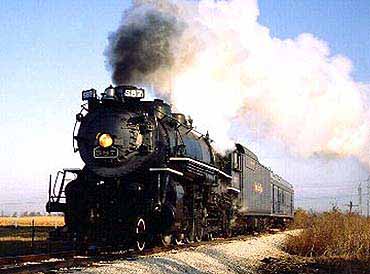
As a potentially profitable opportunity presents itself, John will send you an alert with specific trade information as to what should be bought, when to buy it, and at what price. Read more
Wednesday will be all about the Euro. That is the day that the European Central Bank announces the result of the next tranche of its quantitative easing program, the LTRO, or Long Term Financial Reorganization policy.
This is the program that allows European banks to borrow unlimited funds at 1% with no questions asked. This is very important for all asset prices worldwide, since the cash pouring out of the continent has been the primary driver of asset prices skyward since December.
It is safe to say that ?500 billion is in the price. That is what the beleaguered currency?s rally from $1.26 to $1.35 has been all about. The unwind of Euro shorts in the sterling and yen crosses have also been a factor. If the ECB delivers ?1 trillion instead, the Euro will pop to $1.37 and risk assets everywhere will rally. If they don?t, expect a low volume bleed off in prices, and the long awaited correction to begin. It is a coin toss which way it will go, so I shall watch from the sidelines.
Anticipation of more sugar infusions from the government has sparked the monster rally in the sovereign debt markets that I predicted last month. Spanish ten year bonds have fallen from 5.8% to 5.5%, while similar Italian yields have made it all the way down from 6.0% to 5.4%. That is quite a long way from the 8.0% peak we saw as recently as December.
Oil has been another new assist juicing the Euro. If the Euro falls, then the local cost of fuel in Europe would rise sharply, as oil is prices in dollars. This would exacerbate the recession already in progress on the continent. These concerns could prompt ECB president Mario Draghi to delay further interest rates cuts, generating more Euro strength.
If we do get the move to $1.37, that should clean out a big chunk of the remaining shorts, which have dropped recently, but are still huge. Since January 24, total shorts have fallen to 142,000 contracts, down from the all-time high of 171,000 contracts. That works out to $17 billion of underlying remaining on the short side.
Get the Euro back up to $1.37 and it might become an attractive short again. It?s just a matter of time before the market refocuses on Europe?s underlying fundamentals, and those are dramatically worsening by the day.
There is no limit to how far president Obama is willing to go to stimulate the economy and reassure his election. So I had to be amused when a friend sent me a link to his latest proposal. Warning: the source is a college humor website, so I would take it with so many grains of salt. For a good laugh, click here. Fellow writers should be prepared for the worst. The economy will not be the only thing stimulated.
As a potentially profitable opportunity presents itself, John will send you an alert with specific trade information as to what should be bought, when to buy it, and at what price. Read more
Elon Musk certainly came up with a winner with his unveiling of Tesla?s Model X on February 9. When I first heard the specifications of Tesla?s new Model X, I was floored. The all- electric vehicle offers four wheel drive. It has spacious seating for seven. It accelerates from zero to 60 miles per hour in 4.4 seconds, a faster jackrabbit sprint than you?ll find in a Porsche Carrera. It is in effect an all-weather SUV- minivan-high performance sports car hybrid.
The electric drive achieves a generational leap in capabilities. The 85 kWh lithium ion battery back boasts a 300 mile range, with a cheaper 60 kWh version available with a 230 miles range. The all aluminium body saves enough weight to give you this fantastic reach.
The only competitor this close will be BYD Motors (BYDDF) model E-6 with a 186 mile range due in the US by the end of the year. This compares to my existing electric Nissan Leaf (NSANY) which takes seven hours to charge and can make it only 80 miles before pooping out.
Don?t bother looking for the motor because you?ll never find it. There is one mounted under each axel. Lift the hood and you?ll just find more storage space.
If you buy both the high powered wall connector and the twin charger for a combined $2,700, you can charge up from empty in only 4.5 hours. Of course, you?ll have to rewire your home to take an extra 100 amp circuit.
Tesla is departing from the all-electric convention by not using the standard J-1772 plug. Instead, it will go for the NEMA 14-30 plug. But this can be attached to J-1172 power sources with an adapter.
A great selling point of electric cars, which the companies don?t mention, is that there is no maintenance. Just bring your car in for a tire rotation every 7,500 miles. Instead of tune ups, you get software upgrades. Even the brake pads last 100,000 miles, as the regenerative braking system does most of the heavy lifting on stopping. You also have to deal with people cheering from the roadside or giving you a thumbs up wherever you go because you are driving a true zero emissions car. No Kidding.
Design was a big factor, and the sleek bullet shape will certainly turn heads. In a tribute to the Mercedes Benz gull wing doors of the 1950?s, the Model X includes its own ?falcon wing? doors.
Don?t hold your breath expecting a delivery anytime soon. Production doesn?t begin at the Fremont, California plant until the end of 2013, and won?t go on sale to the general public until 2014. The great thing about this timing is that it gives you a chance to see if Tesla?s Model S four door all-electric sedan lives up to its sky high expectations, which will see a roll out this summer. The Model S is expected to reach maximum production of 20,000 units a year in 2013.
When I spoke to engineers at the company, my big question was whether the car could make it the 200 miles from San Francisco to my beloved Lake Tahoe. It is within the stated range, but involves a 7,200 foot climb over the notorious Donner Pass.
I know from my Leaf driving experience that steep hills really eat into your range. They said that they would not be sure until test runs began next year, but not to worry. Tesla was planning to build a network of 440 volt, high amperage ?supercharging? stations along the way that can give you a full charge in 45 minutes.
To watch the video of the unveiling, please click here. There, you can also put down a fully refundable $5,000 deposit to get a place on the waiting list. The price may come in at a $70,000-$80,000 range, in line with other top of the line SUV?s with all the extras. I signed up on day one and manage to score delivery number 60. Last time I checked, they were up to 645.
I have to think that there will be a stock play here sometime this year. Tesla shares rose 55% after the December low, massively outperforming the market. If we get any kind of a selloff in the near future, as I expect, you might want to pick some up. When they roll out the S-1 this summer, you can count on the mother of all marketing pushes to positively feed into the shares.
It will also get some mileage if the price of gasoline continues to soar, as will all other alternative energy plays. There?s nothing like driving past those $5 a gallon signs and giving them the middle fingered salute.
I rely on hundreds of 'moles' around the world whose job it is to watch a single, but important indicator for the world economy. One of them checks for me the want ads in the manufacturing mega city of Shensen, China, and what he told me last week was alarming.
Wage demands by Chinese workers have been skyrocketing this year. The biggest increases have been at the low end of the spectrum, where migrant workers from the provinces are earning up to 40% more than a year ago. Wage settlements of 20% or more for trained workers are common. One factory that gave staff only a 10% increase saw many of them fail to return after the recent Chinese lunar New Year.
Of course China's blistering 8% GDP growth is to cause, which has pushed inflation well beyond the government's 4% target. So the cost of living in the Middle Kingdom is rising dramatically. The problem has been particularly severe with imported commodities, such as in food. Hence, the increased demands.
This is important for the rest of us because low wages have been the cornerstone of the Chinese economic miracle. In just the last decade, average monthly Chinese wages have climbed from the bottom rung to the middle tier. That seriously erodes the country's cost advantage, which has gained it such enormous shares in foreign markets, like the US. Take away the country's price advantages, and demand will wither, slowing growth globally.
What will they be demanding next? Collective bargaining rights? In the meantime, keep checking those Craig's List entries for Shanghai.
Average Monthly Salary
$3,099 Yokohama, Japan
$1,220 Seoul, South Korea
$888 Taipei, Taiwan
$235 Shensen, China
$148 Jakarta, Indonesia
$100 Ho Chi Minh City, Vietnam
$47 Dhaka, Bangla Desh
$1.25 an Hour? You Must Be Joking!
?Above $100 a barrel we are starting to flirt with demand destruction, and at some point that will begin to kick in, probably later this year,? said Tom Petrie, co-founder of Petrie Parkman, a Houston energy based investment bank.
This is one of the most bizarre markets I have ever seen. The worse the economic outlook gets, the higher the market goes. But it doesn?t breathe like a normal market, with plenty of corrections along the way giving traders a chance to get in. It has been a straight line up with nary a pullback, trapping many players on the sidelines. But it has been going up so slowly that call option buyers have been left out in the cold too. What is the market struggling to tell we deaf investors?
Let?s go to the videotape. GDP peaked in Q3, 2010 and fell to a 1.5% rate by Q2, 2011, hardly a pace to set off fireworks. It has been flat lining ever since. Personal income has been falling for five consecutive months. So has sales growth. Industrial production hit a 22 month low in January.
Add up all these numbers, and you get a recession that starts by this summer at the latest. A data stream like this has reliably produced a recession every time for the last 50 years. Except, it?s different this time.
Enter quantitative easing. Virtually every major central bank in the world has rushed to print money in the past year. They have behaved like tag team wrestlers, with the Federal Reserve doing the heavy lifting, followed by Europe, Japan, the United Kingdom, and China.
How long did it take Europe?s quantitative easing to flood into the US? I reckon about five minutes. Look at the chart of the adjusted monetary base below prepared by the St, Louis Fed, which took off like a bat out of hell the second the ECB?s LTRO was announced.
However, all this stimulus is not having the desired effect, as very little of it is ending up in the real economy. You can see this in the velocity of money, or the number of times a dollar gets turned over per year, which has plunged to record lows in virtually every country. This means that all this cash is going into asset prices, especially stocks, where it stops dead in its tracks.
The scary thing about this is what happens to markets when the sugar infusions stop. For a preview, take a look at the chart for the S&P 500 last summer. The Fed ended QE2 on June 30. Within three months, the closely watched large cap stock index fell by 25%.
Markets didn?t recover until Europe started talking up their own QE prospects in the fall. It turns out that even the most dovish members of the Federal Reserve only want to use quantitative easing sparingly, and in small doses, because of the inflationary risks it presents down the road.
Markets are made up of people. Understand the people and you will understand the markets. Anticipate them, and you will make a fortune. I think what is happening here is that those who relied only on economic data and missed the true message of QE1 and QE2 and got trapped on the sidelines, greatly underperforming more aggressive peers.
They are not going to make the same mistake a third time. Those are the people buying up here. On top of that, others are buying simply because the stock market has gone up. Every time I have seen this happen in my 40 plus years in the business, it has ended in tears.
I am not cherry picking the data here to support a hopeless permabear position. I will not sit in a throne and order the tide to stop rising, like King Canute. Let me tell you what remains on the program:
*A $525 billion fiscal drag promises to suck 3.5% out of GDP by year end. This includes $250 billion from the expiration of the Bush tax cuts, $100 billion in automatic sequestration budget cuts, and $100 billion from the end of the payroll tax holiday. These are not forecasts, they are certainties under current law.
*The great prop for the stock market, corporate earnings growing at red hot rates, have begun a noticeable slowdown.
*Budget cuts at the state and local level are moving ahead at a prodigious rate, sucking another 2% out of GDP. Some communities are now charging those pleading for emergency services $300 for 911 calls. Teacher layoffs continue unabated.
*Europe is going into recession on schedule. The EU commission just cut its 2012 prediction of GDP growth from 0.5% to -0.3%. Portugal will see a -3.3% shrinkage in GDP.
*The China slowdown continues, with the People?s Bank of China rushing to chop reserve bank requirements twice in three months.
*Oil? Has anyone looked at oil lately? Every oil company economist on the planet will tell you that when oil sticks over $110 a barrel, demand destruction explodes, guaranteeing a recession. It went out on Friday just short of this print. Oil truly sows the seeds of its own destruction.
The data are not all bleak. Car sales have made it back up to a 14 million unit annual rate, up from the 9 million units in 2008. The decline in jobless claims is indisputable. So the rally could continue for another month or two. But the jobs data can be highly fickle, volatile, and subject to scads of revisions. So I am keeping my core short position in the (SDS) and protecting it with short dated upside hedges.
When the fat lady sings for this market, I want to have a front row seat.
I am frequently asked to propose a long term portfolio that investors can just buy and forget about. They have no interest in sitting on the edge of their seat waiting for my next trade alert, staying up all night to catch the European opening, or scanning every wire service headline to glean a momentary trading edge.
I have put together a model portfolio that achieves exactly that. It focuses on the major trends sweeping the global economy that should run for a few decades or more. Regular readers of this letter are already well aware of these themes, and probably mumble them in their sleep.
Rising standards of living in emerging markets are certain to lead to major shortages in every type of commodity. These include food, precious metals, base metals, and all forms of energy. There is no way to avoid this shortfall, as the population is growing faster than our ability to bring on new sources of supply, which often take five years or more.
I have a big slug of exposure to specific emerging markets where GDP growth rates are triple or more than America?s own pathetic 2% rate. There is also a heavy weighting in America?s premier technology companies. Since the industry is literally on my front door step, it is clear to me that technological innovation is accelerating and will have a leveraged effect on our future, and that the US has an overwhelming lead. If you don?t believe me, then just try to hire an engineer in Silicon Valley, or find a reasonable rental in Palo Alto or Mountain View.
This would be the ideal portfolio for those who intend to lock it up for a long time. It would be a great use of funds that will not be needed for college educations that are 18 years into the future, or a retirement that is 40 years out on the horizon. It has an aggressive growth element to it, so it is ideal for the younger investing class.
I am not by any means suggesting that you run out and buy this portfolio today. Wait for a substantial sell off in the markets before sticking in your toe. One of the reasons that I keep high cash positions is so that I can buy names like these on the big dips. October 4, 2011 would have been a great day to load the boat, but only if you went into that day with cash coming out of your ears.
The portfolio is only available to paid up members of Global Trading Dispatch or my daily premium newsletter. To download the excel spreadsheet with the names, ticker symbols and asset class weighting, please click here, and enter your user ID and password.
Global Trading Dispatch, my highly innovative and successful trade mentoring program, earned a net return for readers of 40.17% in 2011. The service includes my Trade Alert Service, daily newsletter, real time trading portfolio, an enormous trading idea data base, and live, biweekly strategy webinars. To subscribe, please go to my website at www.madhedgefundtrader.com , find the Global Trading Dispatch box on the right, and click on the lime green ?SUBSCRIBE NOW? button.
No, I?m Not Telling You What?s in the Portfolio
?From an economic standpoint, it is very hard to argue against the idea that the economy is gaining some steam here. A lot of those negative beliefs are starting to turn, such as credit. The upside risks to equities are greater than the downside risks?, said Dan Greenhouse, chief global strategist at BTIG.

